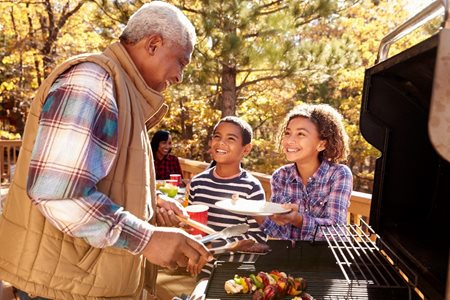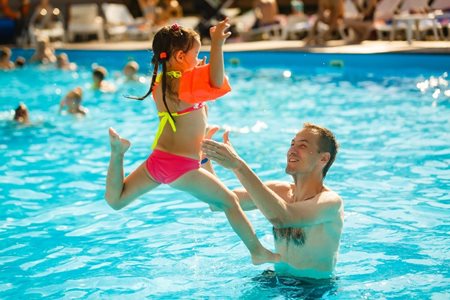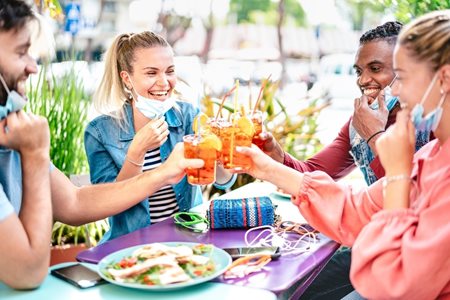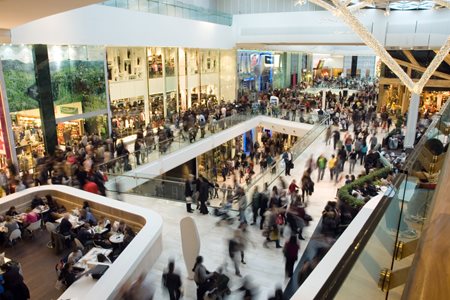.png.aspx;?width=450&height=450)
As countries around the globe begin allowing businesses and public areas to reopen, decisions about which summer activities to engage in is left to individuals and the members of their household. Overall, the risk of getting infected with COVID-19 depends largely on how many people gather in one place, the time spent in communal areas and the need to use commonly touched surfaces.
Global Travel Plus has created a rating scale for the level of risk associated with certain activities from backyard gatherings to a day at the pool.
Going Camping (Low Risk)
One of the least risky summer activities is going camping given that you are outdoors, isolated, avoiding communal picnic areas, and sleeping in your own tent with close family members. This activity can become riskier if you are camping with other families or are in a densely packed camping ground where you are surrounded by people. Sleeping in tents with people outside of your household can also increase the risk of infection so limit the people whom you will be in close contact with during your trip.

Beach or Pool Day (Low Risk)
Spending time at the beach or pool during hot summer days can be refreshing for the family as long as social distancing regulations are followed. According to the CDC, there is no evidence that COVID-19 can be spread to humans through the use of recreational waters. Since indoor settings and crowds may increase the risk of infection, chose to visit a beach or an outdoor public pool in the early mornings or later afternoons when there are less crowds and find beaches that reserve areas for setting up.

Outdoor Celebrations (Low to Medium Risk)
Meeting outdoors in a spacious and open area with a small group is not as risky as meeting indoors. Safety depends on whom you invite and what their behaviors has been in regard to how well they have followed social distancing regulations. To lower risk of spreading the virus, avoid sharing food, drinks, and utensils. To limit the risk, suggest to your guests a BYO gathering, encouraging them to bring their own food and drinks. An alternative to a backyard meal is a lawn game tournament where everyone can wear masks and do not need to remove their face coverings while eating and drinking.
The risk associated with outdoor celebrations is highly dependent on the size of the gathering and how close people are to each other. The larger the guest list, the greater the potential of one person being a carrier is, especially if you are bringing together people of different communities.

Hotel Stay (Low to Medium Risk)
There is relatively low risk associated with staying at a hotel when you have your own room and you limit the time spent in common areas such as the gym, lobby, elevator, or common room where the risk of exposure is greater. If you are traveling with another family and are planning to share a hotel room or car space, talk to the other family beforehand about their quarantine habits and set the same expectations for the precautions everyone should take during the trip.
To minimize risk, bring disinfecting wipes to wipe down common-touch surfaces, remove the bedspread that may not have been cleaned after every guest, ask about the hotel’s cleanliness policies and new COVID-19 policies, order room service rather than eating at the hotel’s restaurant, wear a face covering and use your knuckles or a stylus when pressing buttons in common areas.

Restaurant Dining (Medium to High Risk)
Dining out can be a high-risk activity, especially if dining indoor, as people tend to stay for longer periods of time at restaurants which makes the duration of exposure longer. The risk level of restaurants depends on how spacious the seating area is, face mask and hygiene policies for staff, reduction of self-serve areas, usage of single-use condiments, and easy access to hand-washing stations. To minimize the risk at a restaurant, prefer outdoor dining options and share meals with household members to avoid having to remove your mask near others.

Shopping at the Mall (Risk Varies)
Shopping is a great activity at any given time of the year, however, the risk associated with shopping malls depend on what type of mall it is, how crowded it gets, and how much time you spend there. The key to mitigating risks associated with shopping malls is to go with a purpose instead of shopping leisurely and making it a day of retail therapy. To limit the risk, browse the online catalog before going into the store to know what you are going in for and visit during off-peak hours when there is less of a crowd.

Late Bars and Nightclubs (High Risk)
Crowds, close contact, sweating, dancing, singing, and inhibition-loosening alcohol can all make nightclubs a very high-risk activity. As people breathe heavier, sweat, and brush against you from dancing, more virus is spread into the air that you may breathe in or rubbed against you that may come into contact with your eyes, nose, or mouth at any time.
Drinking can also make people careless about social distancing and can be the cause of more close contact from strangers whose social distance habits you do not know about. Avoid going to nightclubs this summer and, instead, invite a small group of close friends and have a party at home.
